Topics

Basic (free) Member
|
| | | |
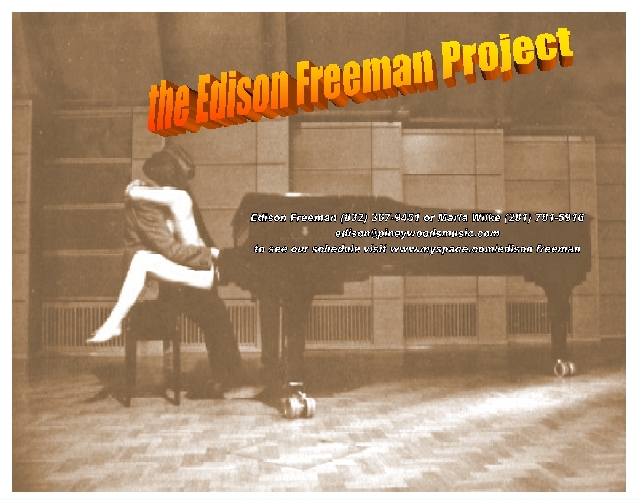
edison freeman and the color of fire
|
2/23/2008 6:56:54 AM
Rant on digital recording
[rant]
WARNING: This is a technical article. This has been determined by the sturgeon genital to kill brain cells. Pregnant bassists and lactating drummers are advised to avoid this.
Some people seem to think that only analog rocks. That's crap.
One decibel is the amount by which the pressure of a pure sine wave of sound must be varied in order for the change to be detected by the average human ear. The decibel can express an actual level only when comparing with some definite reference level that is assumed to zero dB.
So the human ear operates up to the threshold of pain, around 130 db. That means there are only 130 digital gradations of level necessary to create an analog sensation to the average human ear.
A 16 bit digital recording presents us with 65,535 gradations of amplitude. So if anyone tells you their ear can hear the dynamics difference between CD quality 16 bit audio and analog through the same playback system is woefully self decieved, or a prevaricator.
How about sampling rate. Well, the sample rate is the number of "snapshots" of audio that are sampled every second. The continuous audio stream is digitally encoded in a similar way to a movie camera capturing motion by recording a frame of image many times per second.
The higher the sample rate (and bit depth), the closer one can come to accurately representing the original sound. The usual analogy is representing a curve with straight lines, the higher the number of blocks, the closer one can come to accurately describing the curve:
44.1k, (44.1 thousand samples per second) 48k, and 96k are the most common sample rates. 44.1k is the standard used for CDs, 48k is common in video. 96k is becoming more common among audiophiles, but as with high bit-depths, recording the extra samples takes up much more hard-disc space, and often requires multiple digital interfaces to handle the extra headroom. One generally does not want to use sample rates below 44.1k, because of the "Nyquist Frequency" a formula that indicates that the audio bandwidth of a sampled signal is restricted to half the sampling frequency. So in order to cover the approximately 20khz range of human hearing, the equipment must sample at more than 40,000 (40k) samples per second.
This is the most important issue in a "pro quality" recording device. There is some distortion in D to A conversion at any current sample rate, but it's visible to test equipment only and undetectable to the human ear. 96k sampling reduces it to a pimple on an elephant.
But hey, analog introduces its own form of distortion, tape compression, and with it's high noise floor, is limited in it's dynamic range to about 60db. Any DAW has a dynamic range of better than 90db. So, in short, ANY DAW is more pro-quality than Jack White's beloved analog tape (an ungrounded prejudice in my opinion) and with a competent careful engineer can produce better results than any studio based on analog.
NOTE this is assuming no qualitative difference in anything connected to the respective recording decks, pres, mics, et al. Any of those should be low noise and colorless, unless coloration is what you're after.
Most of the crap arguments about audio are based on superstition and lies told by the "purists", who are usually people who want you to buy something you don't really need, or can afford...
Science should by definition be based upon repeatable results in actual experience.
There is no doubt in my mind that a perfect ADC or DAC does not and can not exist. The issue for me is, can the human ear really hear it?
I don't think so. My hearing when I was in college was nothing short of excellent, I tested at 22.5 KHz. My hearing has degraded as I've aged, recently tested at 17KHz in the left ear, thanks to drummer's crash cymbals...:).
Recordings I've been listening to for 30 years still sound the same. Why? Because of the lack of program material above 17KHz.
If anyone around here can hear lik
|

|
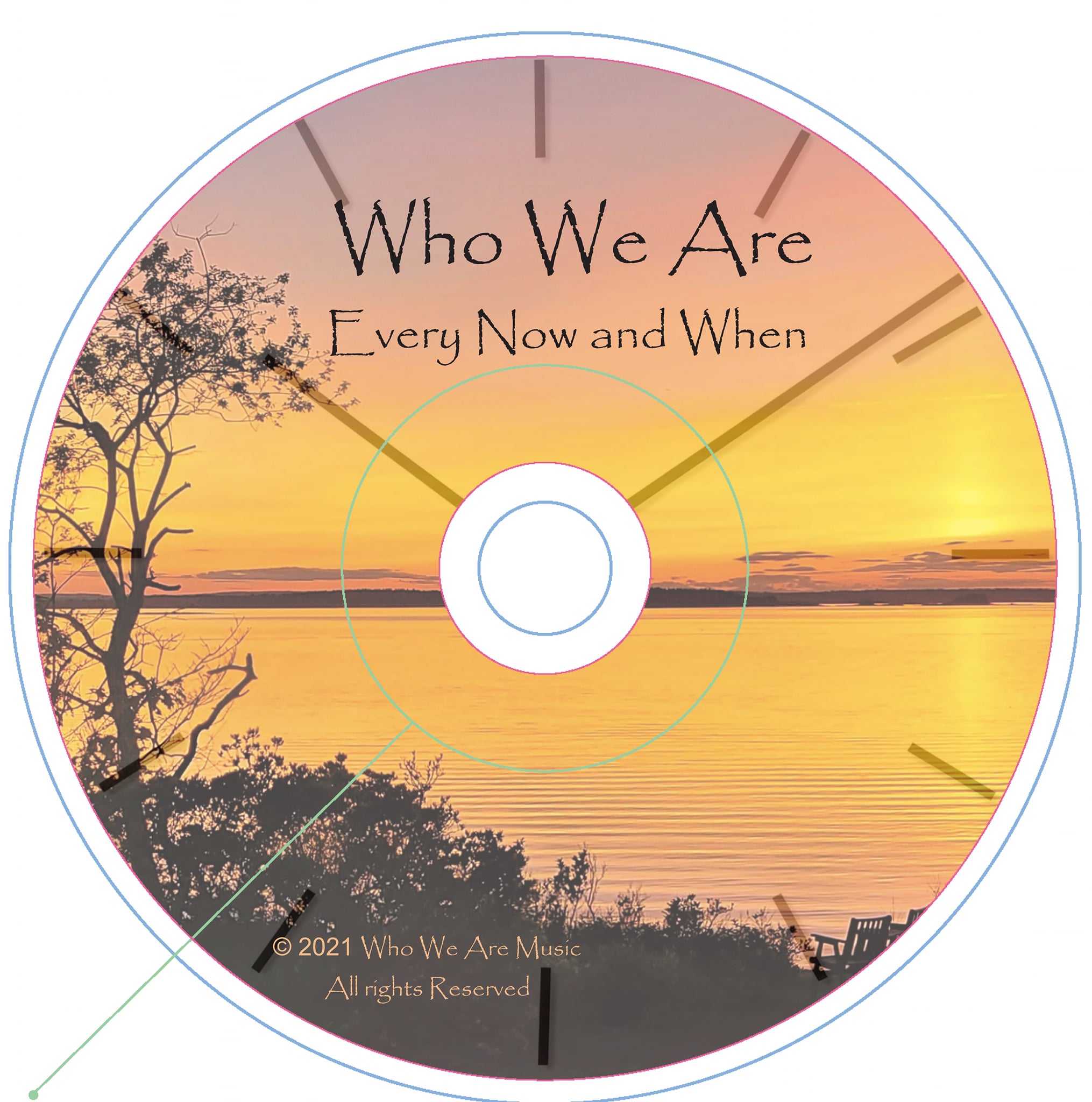
Kevin White
|
2/23/2008 7:16:18 AM
Yup. Correct.
I love when cable manufacturers argue that you have to spend $100 for 3ft of their best offering and you'll HEAR THE DIFFERENCE.
Um ... not true. Hype and myth.
$6.99 for good quality cable is all it takes to get from A to B.
The rest is capitalistic pickpocketing.
Kev-
|

|

Pulse Eternal
|
2/23/2008 8:31:21 AM
Interesting post EF.
There are a few things that are slightly off the mark here but I do agree with you that the purists who think analog is the only purist choice are a little misguided.
You are correct with your reference to 16 bit digital being capable of 65,535 (65,536 if you include digital zero). However, that does not represent 65,535 decibels. It is non linear. A 16 bit system has a theoretical maximum of 96 dB of dynamic range which, while short of 130 dB, is still far greater than the dynamic range of almost all musical performances.
A 24 bit system has a theoretical maximum dynamic range of 144 dB.
On sample rate.....
One big problem with a 44.1KHz sample rate is that it is woefully inaccurate at reproducing any high frequency content, particularly anything above 10KHz. The reason is quite simple. A complex waveform at around 15KHz will only be represented by roughly THREE samples! That is simply nowhere near enough accuracy to reproduce any intricacies at that frequency.
Now, some may argue that the human ear cannot generally detect any of the complexities (harmonics) at that frequency anyway but that is not the case. A phenomena known as psychoacoustics in human hearing means that it is indeed possible for human ears to detect intricacies outside the measured frequency response of the ear.
At 96KHz sample rate, there's still only around six and a half samples per 15 KHz cycle. While that is still inadequate to accurately represent a complex signal at that frequency, it is a vast improvement on 44.1KHz sample rate and CAN be detected by the human ear.
Another reason that recording at 96KHz and 24 bit depth is that during mixing, digital plugins have much more data to work with and are more accurate. During a moderately complex mix, every single plugin and signal pass adds up to a significant difference and is clearly audible in the final master, even after being sample rate converted and dithered back to 44.1K / 16 bit for CD.
The difference between a project recorded at 44.1K / 16 bit and mixed to the same, and the same recording done and mixed at 96K / 24 bit then converted to 44.1K / 16 bit is actually clearly measurable. I did that very test just to satisfy my own curiosity and even produced an error output waveform so I could do a spectrum analysis on it. I was actually quite shocked at just how significant the difference is both in measurable terms and in listening tests!
I used to be of the opinion that anything more than 44.1K / 24 bit was simply a waste of bandwidth and disk space until I got a 96 / 24 capable Protools rig and some high end converters. After hearing 96 / 24, I now record, mix and master all my songs and my client jobs at that rate / depth, even if the final product is for CD.
I also produce session duplicates and masters on DVD-Audio and HDD for archival purposes.
One last word on analog....
A really good analog tape machine at 30 ips with a properly aligned Dolby SR unit WILL sound better than a 16 bit / 44.1K digital system simply due to the fact that the analog system can reproduce the nuances in the high end FAR more accurately than the digital system.
A cheaper analog system running at 15 ips with a DBX unit will possibly not sound better than a decent 16 / 44.1 digital system though.
I do wholeheartedly agree with Kev's reply about the super expensive 'interconnects' . They are pure snake oil. Decent quality cables costing only a tenth of the price will perform every bit as good as the hyped up ones.
In that situation, it is not even possible to measure the difference between these cables, let alone hear it!!
The ones that really amuse me are the 'interconnects' with the arrows on them..... for goodness sake, audio is an AC signal (alternating current) which means it is constantly changing direction.... It doesn't care which way the arrows point!!
One more thing the HIFI snake oil guys don't realise (or don't want to know) is that there are practically N
|

|

satch
|
2/23/2008 8:45:07 AM
Oooh - my favourite topic!
Sadly, SuperPuss already nailed it! Well done Titania, saved me loads of typing!
|

|

Pulse Eternal
|
2/23/2008 8:47:09 AM
One last thing EF....
I do agree with you about the general public and what they have become accustomed to accepting. With the proliferation of this insane loudness war that has been going on, even a 16 bit / 44.1K system FAR exceeds the requirements of these totally destroyed mixes.
It is my hope that one day, real mixes that are not fatiguing to listen to will start to become more popular.
I dearly hope that people will start to recognise that they have been robbed of quality music by the morons perpetuating this loudness war.
IN MUCH THE SAME WAY THAT THIS SENTENCE IS DIFFICULT TO READ, HYPERCOMPRESSED MIXES BECOME FATIGUING VERY FAST BECAUSE THEY ARE ALWAYS IN YOUR FACE AND DO NOT GIVE YOUR BRAIN A CHANCE TO RECOVER!
The public are being blinded and robbed of quality music and, like the proverbial frog in the pot, they don't even realise, let alone care!
Personally, I would much rather listen to a home recording done by a creative indie artist here on IAC than listen to a HYPERCOMPRESSED commercial release by one of the majors.
Fortunately, there are heavyweight industry professionals lobbying for the end to this loudness insanity.
Check out www.turnmeup.org for more information on this.
I have registered my interest in having my studio certified once the 'Turn Me Up' specifications are complete and I am telling as many as I can about it.
|

|

Pulse Eternal
|
2/23/2008 8:50:59 AM
Thanks Satch. Looks like I was typing my followup reply as you were replying.
If you haven't already, check out the Turn Me Up website. I think you'll enjoy it. One of the guys behind it is Bob Katz and there's updated information on his awesome K-System specification.
|

|

Two Silo Complex
|
2/23/2008 10:02:13 AM
Hey EF and Superpuss,
Great topic with some interesting info. You guys are way more technical than I am.
My only comment is that with analog recording you get a natual headroom using 2 inch tape is the best I have found in analog. The tape media itself adds a sublte warmth to recordings that is just not possible with digital. I agree with your comments that tape also has a noise factor that must be dealt with as well as the a/d converter issue. I no longer record in analog because the DAW out there have made things so much easier and cheaper. I do very much like the digital quality and overall think it does outperform analog but I don't think an analog recodring that is done with good quality can be discounted as a method of recording that is no longer worth while.
TSC
Ken
|

|
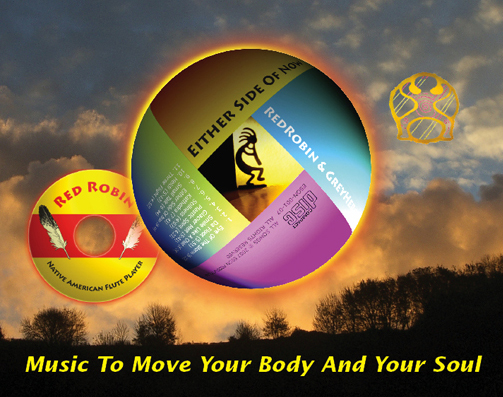
RedRobin
|
2/23/2008 10:08:03 AM
I only know that the digital stuff is doubtless much more enabling and easier to record with. My fellow musician on my album "Either Side Of Now" has 40 years of experience in the music biz and we used one of his contacts to Master our album and instructed an Analog warm sound bias.
I think it's always important to embrace new technology and not refuse to assess or accept it. There's pros and cons for both.
|

|
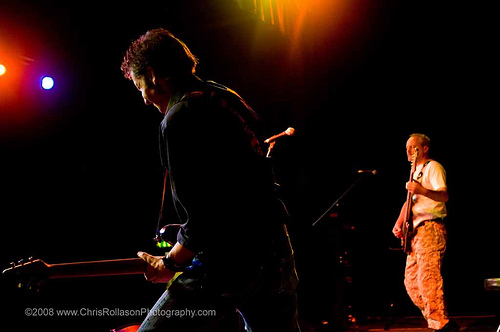
TNT
|
2/23/2008 10:10:38 AM
"Personally, I would much rather listen to a home recording done by a creative indie artist here on IAC than listen to a HYPERCOMPRESSED commercial release by one of the majors."
Totally agree, but as a mastering engineer, I personally think that it's the ARTISTS we need to educate the most.
I'm sick of hearing, "can you get it louder overall"!!!!!!!!!
You gotta give the customer what they want if they directly ask for something, or turn their business away, which I can't afford to do.
I've now even started to get mixes sent in that have already been overly compressed by the mix engineer, giving me very little room to leave a good dynamic range. i'll look into the turnmeup thing as it sounds very intereseting.
|

|

edison freeman and the color of fire
|
2/23/2008 10:45:26 AM
hey there SP. Clarification time.
I by no means intended anyone to read me as saying that 65535 gradations of amplitude equaled 65535 decibels. 3 db is a doubling of acoustic wattage!
I'm just saying that the human ear by definition is not nearly that sensitive to amplitude differences.
|

|

edison freeman and the color of fire
|
2/23/2008 11:03:21 AM
"A phenomena known as psychoacoustics in human hearing means that it is indeed possible for human ears to detect intricacies outside the measured frequency response of the ear."
I've done lots of reading on psychoacoustics and I have never seen any data to support that. If it were true, why can't anyone I know hear a dog whistle?
|

|

edison freeman and the color of fire
|
2/23/2008 11:29:47 AM
"I used to be of the opinion that anything more than 44.1K / 24 bit was simply a waste of bandwidth and disk space until I got a 96 / 24 capable Protools rig and some high end converters. After hearing 96 / 24, I now record, mix and master all my songs and my client jobs at that rate / depth, even if the final product is for CD."
I might agree that 24 bit produces a difference. I think the biggest difference you experienced was the use of "high end" converters. That's where the magic is. Most PC based sound cards do not support 44.1 KHz sampling rates natively, but instead actually sample at 48 KHz only, and use internal resampling to support that rate with generally poor results. I like 24/48 myself, and although my HD24 is 96 KHz capable, it does not sound better, it just makes files twice as big.
Also, speakers have a natural high frequency roll off, unless you use piezo tweeters (yechh, harsh!). One more factor diminishing the importance of this frequency range.
Furthermore, the highest note on a piano has the fundamental of 4096 Hz. That means the highest detectable overtone of any instrument (other than drums or voice) would be 16384 Hz. Unless you use a piccolo, maybe... So we are only discussing percussion and breath, here. Cymbals, tamborines and shakers, mostly. There is so little musical content above 16KHz that I just can't see how folks can make a big deal out of it.
|

|

edison freeman and the color of fire
|
2/23/2008 11:47:40 AM
"The tape media itself adds a sublte warmth to recordings that is just not possible with digital."
Got to disagree with that, my friend.
The "warmth" occurs because of 3 factors:
1. Analog tape heads are electrical coil based devices. Their impedence doubles as the frequency doubles, i.e. full output of very low frequencies, diminished output of high frequencies.
2. Tape compression. Overdriving the signal to analog tape causes a shrink in dynamic range, and a further corresponding accentuation of low-end dominance.
3. Most Engineers still don't seem to know that microphone choices that were appropriate for analog tape are not so good for digital recording. Most highly prized vintage condensor mics have a 2-4 KHz bump that sounded good on a recording medium that was naturally bass heavy. Digital is razor flat, and the mics need to be too, as much as possible.
By the skillful choice of proper microphones and the skillful use of compression while in mixing, the "analog sound" is absolutely achievable in digital recordings.
Don't listen to any of the stuff I have on this page to see if I know what I'm talking about. All of this was recorded while making the same mistakes I'm listing above.
But I always loved the sound of a vinyl record from the heyday of the 1970's.
There is an artist here who goes by the name of Robert Firehawk, who I just finished mixing a tune for, called "through the veil" This is the closest I have yet come to the vinyl sound. It's close, but I'm not done yet. I still have a ton to learn about properly approximating tape compression, but at least the EQ is starting to stack up.
|

|

satch
|
2/23/2008 11:49:01 AM
Respectfully, I have to disagree there Edison - I use an Avalon mic pre-amp with a 32khz shelving cut and boost control - I love, really love, what that does to vocals and certain acoustic instruments recorded with a 4db boost at 32khz. You can DEFINITELY hear the difference with and without!
|

|

edison freeman and the color of fire
|
2/23/2008 1:12:34 PM
Well, Satch, that's a matter of personal preference, i think. I know I prefer a mic I don't have to EQ too much. In my own setup, even using ART tube pre's, I have to cut those frequencies if I use a U87, which has that "presence" bump, and I don't even have to touch it when I use the TLM123...which is more razor flat.
In a perfect world, I track and mix levels, and don't have to play with EQ. Makes for a much faster and more controllable process. YMMV :)
I'm a real fan of the brightness found at 8Khz-10KHz on stringed instruments, especially a grand piano. and I find that the presence bump overpowers that range.
It's funny, recording is like religion. And I'm a bit evangelical in my approach. My recording religion may not take folks to heaven, but it will sure save money over those high priced churches of 96 KHz and analog tape.
I just don't think the difference in sonic quality is very cost effective.
|

|
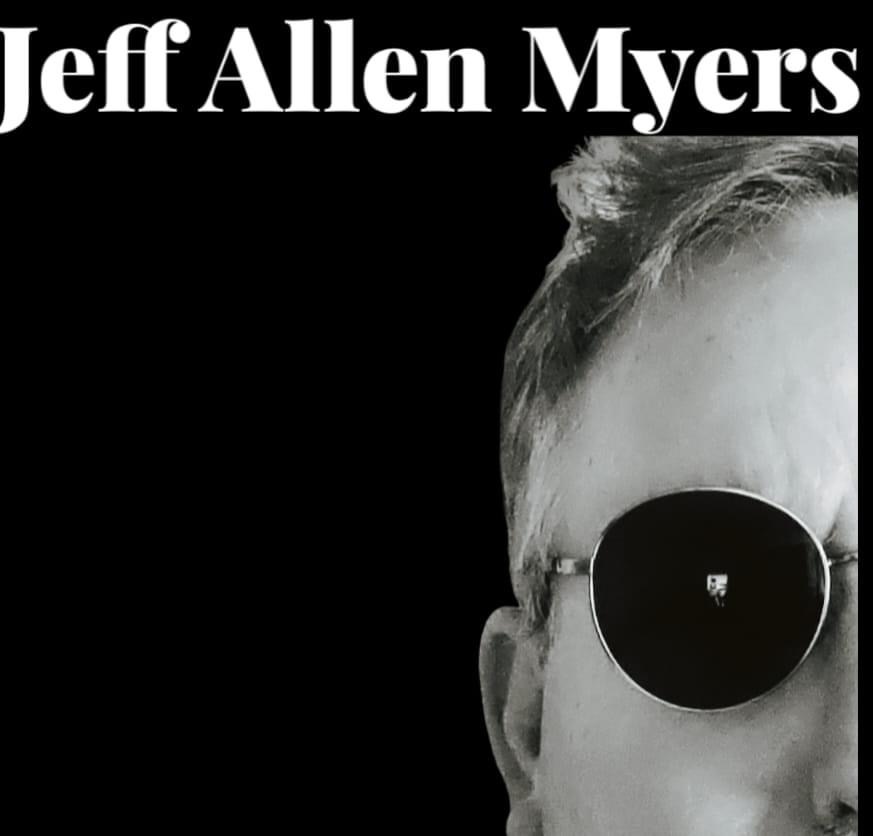
Jeff Allen Myers
|
2/23/2008 2:35:47 PM
My eyes are glazing over....
I stand by the immortal words of Tufnel, "This one goes to Eleven" :)
|

|

LyinDan
|
2/23/2008 2:42:55 PM
As an experiment, one might listen to a 15khz sine wave and then a 15khz square wave and see if one can tell the difference in a blindfold test. That might illuminate whether anything over 20Khz is really important.
:)
P.S. Not after those tones have been through A/D and D/A conversions, though. The electronics might well produce undesirable effects in those two tones.
|

|

Pulse Eternal
|
2/23/2008 9:44:24 PM
Lyin Dan wrote - As an experiment, one might listen to a 15khz sine wave and then a 15khz square wave and see if one can tell the difference in a blindfold test. That might illuminate whether anything over 20Khz is really important.
:)
P.S. Not after those tones have been through A/D and D/A conversions, though. The electronics might well produce undesirable effects in those two tones.
I was actually going to post about that very test. However, as you suggest about the converters, this test needs to be carried out in a very specific and controlled environment. Not only will the converters colour the results (backing up my points on 96K vs 44.1 or 48K) but the speakers, amplifier and other signal processing circuitry needs to be absolutely colourless or the test will simply produce harmonic and intermodulation distortion which the ear most definitely WILL hear.
However, it is most definitely well worth doing that same test with just the 15 KHz square wave and listening to the results directly out of the generator (a hardware one, not software plugin), then recording at both 44.1K, 48K and 96K (or even 192K if available). I don't know how obvious this is to others but the difference between the 44.1K reproduction and the generator output is clear to me. (My audio generator is a very high end one made by Audio Precision).
I cannot personally hear the difference between the 192K reproduction and the generator and I dare say I'd be pushing it to pick the 96K from the generator output too.
The difference between 44.1K and 48K is academic BUT, if you are recording for CD and only have the option of 44.1 or 48K, I suggest using 44.1K. The sample rate conversion from 48 back to 44.1K will degrade the signal more than working at 44.1K all the way through.
Satch wrote - Respectfully, I have to disagree there Edison - I use an Avalon mic pre-amp with a 32khz shelving cut and boost control - I love, really love, what that does to vocals and certain acoustic instruments recorded with a 4db boost at 32khz. You can DEFINITELY hear the difference with and without!
I absolutely agree with you Satch! I have used the Avalon 737 a number of times and that 32K setting is just pure silk!!
Now, some may argue that what we are hearing is just the harmonic artifacts of the audible band effect of the 32K filter and that may be true to a certain degree but there is definitely psychoacoustic properties involved outside the normally audible spectrum here too.
Edison,
I do agree with your analysis of analog warmth. There is nothing at all accurate or uncoloured about it but that is why it works!! In some circumstances, the second harmonic distortion and the soft limiting of magnetic tape is a very desirable effect.
No doubt you would agree that it is all about the music and if an inaccuracy sounds good and works with the music, then use it!! That is part of the art of sound engineering.
TNT wrote - Totally agree, but as a mastering engineer, I personally think that it's the ARTISTS we need to educate the most.
I'm sick of hearing, "can you get it louder overall"!!!!!!!!!
You gotta give the customer what they want if they directly ask for something, or turn their business away, which I can't afford to do.
I've now even started to get mixes sent in that have already been overly compressed by the mix engineer, giving me very little room to leave a good dynamic range. i'll look into the turnmeup thing as it sounds very intereseting.
I absolutely agree with you there! I have been showing my clients the advantages of not hypercompressing their mixes now for around ten years and almost all of the time, they are happy to go with a more dynamic master.
I guess I've been lucky with my clients in that they actually care about sound quality over loudness!!
I have had a couple of bands specifically request 'louder than everyone else' masters and I simply tell them if they really want me to do that, it will cost them a l
|

|

Gremislav Iakovich
|
2/24/2008 2:09:29 AM
Noise makes no distinction between digital and analog.
Noise loves vacuum tubes and solid state circuitry alike.
Noise cares not about bit rate.
Noise cares only that 44.1 + 96 = 140.1
Noise would be happy to split the difference and adopt a universal 70.05k standard.
Noise knows no tempo.
Noise knows no key.
Noise knows no genre.
Noise knows no god.
Noise has no political affiliation.
Noise doesn't care about your skin color.
Noise does not discriminate.
Noise is just about the only thing we have left in this world that's still pure.
Noise thinks the 24/96 kids are just as nerdy as the analog kids.
Noise loves everyone.
Noise hates everyone.
At the end of the day, there is only noise.
Love always,
Gremislav Iako)))vich
p.s. noise also thinks that Edison Freeman has his head on straight and knows how to fucking rock.
|

|

Jeff Allen Myers
|
2/24/2008 2:15:09 AM
This stuff is all over my head.............
I do know this, I fart in Bb and its usually in perfect Pitch.......Kinda sounds like Jaco on his Fender Fretless.......... :)~ Heh Heh ...
|

|

Pulse Eternal
|
2/24/2008 3:15:54 AM
Noise and farts!!! lol.... There's a song in that somewhere. It'll probably stink though! ;-)
Edison,
Please don't tak offense at any of my posts here. I happen to think you're a pretty damn cool muso and have added 'Strange Science' to one of my newest SuperPuss stations.
I'm just a passionate engineer, that's all. I've made audio purity part of my career. I do know how to separate snake oil from science and art though ;-)
Rock on my friend and keep pumping out cool music!
|

|

Pulse Eternal
|
2/24/2008 3:41:34 AM
Just one more thing I would like to comment on right now....
Edison wrote - ......Some people seem to think that only analog rocks. That's crap........
I TOTALLY agree there!
As insensitive as the CD buying public seems to compressor abuse and the like, i think it's just a waste of money to go for this EXTREME sonic excellence.
I prefer to educate the artists about retaining the quality of their precious creations and showing it off in the best way possible.
Use a DAW with CD quality specs, and put your time into making good music with a good mix. Nobody needs a million dollar studio anymore to acheive a great recording.
That is true and I particularly agree with the bold part.
It is also true that it is not mandatory to have anything above CD quality to achieve a great result if the music is passionate. I'll enjoy a cassette recording of a passionate song much more than a boring song recorded in a multi million dollar studio with even the best engineer.
However, it is no longer necessary to spend a million dollars to get high end equipment. A high end DAW capable of even 192KHz and 7.1 channel surround will cost around 50 grand with decent monitoring and room treatment and has the ability in the right hands to produce material rivalling the very best studios.
I do not NEED to record at 96KHz but I CHOOSE to because it is no extra effort and I can clearly hear the difference even if the majority of my listening audience are happy with their ipods!!
I am equally as passionate about sound engineering as I am about music and treat both as equal parts of my craft. I aim for purity because I can!!
|

|

Kevin White
|
2/24/2008 7:13:16 AM
I can only hear frequencies in the speech range, which is why I run all my mixes through a device I like to call a telephone.
That way, all those annoying highs and lows get filtered out and I'm left with the middle stuff that I can hear very clearly.
Once one gets used to dealing with limited range listening, one can refine one's approach to tuning in and out specific annoying frequencies.
For instance, when my wife wants me to do chores, I'm miraculously able to selectively cancel the frequencies of her voice so that nothing comes through.
Yet, when called for dinner ... those frequencies come through loud and clear.
Yes, once limited range listening is mastered ... the world is a MUCH kinder, quieter place.
Kev-
|

|

edison freeman and the color of fire
|
2/24/2008 9:39:17 AM
Thanks to all for a great exchange of ideas concerning what has now become a large part of the craft for musicians and songwriters at large.
What was formerly a very restricted commercial arena, due to the massive amounts of capital required to create quality audio, has now become scattered throughout private homes across the globe.
Thanks especially to SuperPuss, Satch TNT, and my old buddy Lyin' Dan for some fine tech points. I know I intend to pursue these lines of thinking farther, searching for the "holy grail" of the balance between sonic quality and economic sense.
Titania, I guess you can tell I too am very passionate about this craft. You've found a kindred spirit with a different way of looking at things.
Gremislav, thanks for posting that great poem, at least it was poetic to me. I have several good friends who are deeply into the art of noise as a valid musical expression...the concept intrigues me. And thanks for the kind words.
Kev, you bring up an interesting point about hearing limitations. When I mix, I take the raw cd's over to my dad's house. He is a WWII pacific theatre veteran of the USMC, whose hearing was damaged by the offshore bombardment of Guadalcanal by battleships with 14 and 16 inch guns. But a greater fan of all genres of music is hard to imagine. His hearing range has been compromised to approximate that of AM radio, really falling off over 5KHz, and dropping off completely over 8KHz. If one of my mixes sounds nice and bright to him, which of course is his subjective comparison to the current sound of the recordings he loves most, then I know we're on to something.
And of course, some of the greatest music the world has heard could not be heard by the person that wrote it, Ludwig van Beethoven.
|

|

Bruce Boyd
|
2/24/2008 3:30:55 PM
Vinyl albums have better covers!
|

|

Kim Riemer
|
2/24/2008 7:41:06 PM
Hey Ed. cool discusion you got going here. I've been reading books on mixing, thats probably the most difficult part of getting our music out to the masses, creating that magical mix that will stand up to the best there is out there.
|

|

Pulse Eternal
|
2/24/2008 8:48:56 PM
Edison wrote - "And of course, some of the greatest music the world has heard could not be heard by the person that wrote it, Ludwig van Beethoven."
I am still amazed by how he managed that without being able to hear!!
"Titania, I guess you can tell I too am very passionate about this craft. You've found a kindred spirit with a different way of looking at things."
It is always great to share the same passions from different perspectives. That can often be very inspiring and can open new doors and thought processes. :-)
How does your dad feel about his hearing? Does he get frustrated by it or does he tend to have a wise and philosophical outlook?
Bruce,
I agree about vinyl album covers! There's a certain magic about those. Unfortunately, a very large percentage of my vinyl collection was damaged beyond repair in 1991, including a limited edition SQ surround pink vinyl version of Dark Side of the Moon that I purchased new and had only played once!! That one hurts the most! It was in MINT condition.
|

|

Bruce Boyd
|
2/25/2008 1:03:37 AM
Titania, probably my most "collectible" album is the Aussie release of the first Rolling Stones album from 1964. It has pix of a young, fresh faced Mick and Keef! (as well as the rest of course) .
And since this thread's about recording quality I should mention that album was released in glorious mono ( but did feature something called "full frequency range recording"!)
(btw it's painfully obvious on some tracks that this album was also made before the days of digital guitar tuners!)
|

|

Pulse Eternal
|
2/25/2008 5:29:35 AM
That's a pretty cool album to have in your collection Bruce! LOL @ full frequency range recording!!! :-D
I don't have any Stones on vinyl (any more) but I do have a good collection of remastered Stones CD's with their inferior sized album covers!
Some of my favourite Stones songs are their early mono recordings.
|

|

LyinDan
|
2/25/2008 8:33:10 AM
The Stones NEVER had much use for guitar tuners.
|

|

Bruce Boyd
|
2/25/2008 4:24:33 PM
Ah but these days the tech tunes Keef's guitar - and there's only 5 strings now!
|

|
| |
�2015-16 IndieMusicPeople.com All Rights
Reserved
| |
|